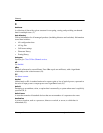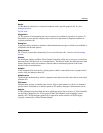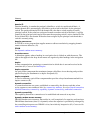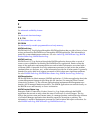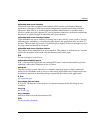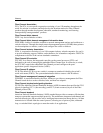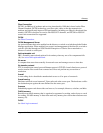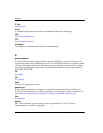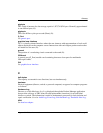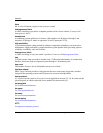
edge switch 2/16 service manual Glossary–19
Glossary
F
fabric
Entity that interconnects node ports (N_Ports) and is capable of routing (switching) Fibre
Channel frames, using the destination ID information in the Fibre Channel frame header
accompanying the frames. A switch is the smallest entity that can function as a complete
switched fabric topology.
fabric element
Any active director, switch, or node in a switched fabric.
fabric login
The process by which node ports (N_Ports) establish their operating parameters. During fabric
login, the presence or absence of a fabric is determined, and paths to other N_Ports are
mapped. Specific operating characteristics for each port, such as buffer-to-buffer credit
(BB_Credit) and data frame size, are also established.
fabric login command
FLOGI. The command that establishes the initial operating parameters and topology for a
fabric. The command is accepted by a fabric port (F_Port).
fabric mode
See interoperability mode.
fabric port
F_Port. Physical interface within the fabric that connects to a node port (N_Port) through a
point-to-point full duplex connection. See also bridge port; expansion port; generic port; node
port; segmented expansion port.
fabric services
The services that implement the various Fibre Channel protocol services that are described in
the standards. These services include the fabric controller (login server), name server, and
management server.
fabric switches
A device which allows the communication between multiple devices using Fibre Channel
protocols. A fabric switch enables the sharing bandwidth and end-nodes using basic
multiplexing techniques.
failover
Automatic and nondisruptive transition of functions from an active field-replaceable unit
(FRU) that has failed to a backup FRU.
FC
See Fibre Channel.




